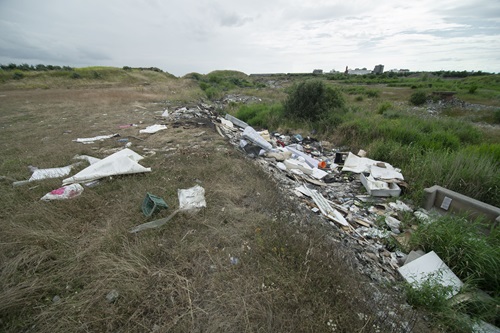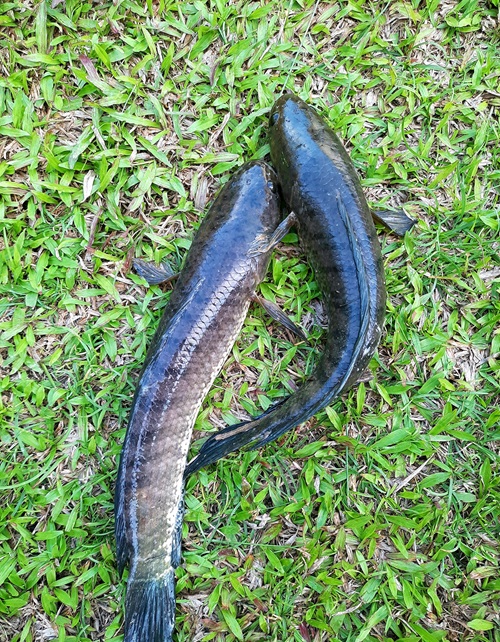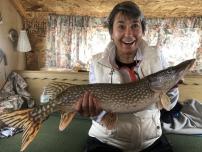
In Virginia Beach, Mount Trashmore, a park built on a converted brownsfield site, is a popular recreation destination. Photo © Sherryvsmith | Dreamstime.com
The benefits of youth sports facilities are well-known. However, as communities become increasingly landlocked, finding spaces to build fields, diamonds and gyms continues to be a challenge. One solution has been the acquisition and repurposing of brownfield sites (defined as property that has had previous use, often as an industrial area).
So everything brown is green again, right? Well, it takes work and the transformation process is a challenge, but for those who undertake it, the rewards are great.
In March of this year, it was announced that Sports Facilities Companies would be repurposing a former Pinellas County landfill site and transforming it into a sports complex with 12 baseball and softball fields (along with eight smaller fields for youth games), five turf fields, 24 pickleball courts and 12 sand volleyball courts.

The 235-acre Toytown site was used as a dump for three decades before closing in 1990. While several sports-related ideas had been floated over the years (these included an Atlanta Braves training facility and a golf course), nothing had ever moved forward.
The trend has been afoot for some time. In Virginia Beach stands Mount Trashmore, the nation’s very first landfill park. In the late 1960s and early 1970s, the city converted a 640,000-ton pile of garbage into a park with eco-friendly amenities, including a water-wise garden.
The main mountain, Mount Trashmore, now 60 feet in height and 800 feet long, was created by compacting layers of solid waste and clean soil. The park also features a smaller mountain, Encore Hill, and two lakes. Lake Windsor (located along South Blvd.) is brackish water fed by Thalia Creek. Lake Trashmore (located along Edwin Drive) is freshwater and hosts various species of fish.
In all cases where such transformations are planned, remediation of harmful chemicals is the first item of business – and the most important. It’s not inexpensive but in some cases, financial assistance is available. The Williamsport Ballpark, Inc., in Williamsport, Pennsylvania, for example, was able to leverage a Brownfield Revolving Fund Loan (RFL) agreement from the Environmental Protection Agency (EPA).
The loan was approved by the Lycoming County Commissioners and brought brings $670,000 to the project to develop the former 30-acre site of an unregulated landfill into an athletic complex. The county hired Brownfield Redevelopment Solutions (BRS) Inc. to prepare an analysis of brownfields cleanup alternatives in support of the EPA grant proposal.
Across the nation, there are successful examples of green spaces that sit where land was once used as a dumping ground. Arlington, Virginia’s Long Bridge Park, once referred to as the North Tract, was formerly a light industrial site. The property consists of two parcels of land: Parcel 14 is the former Davis Industries Site and Parcel 15 is the former Arlington Industrial Area. The remediation and construction process is detailed here.
Back in 2021, Baltimore County, in Maryland, announced plans to build its first new public park in more than six years on a swath of land within Tradepoint Atlantic, an industrial site once owned (and polluted by) the former Bethlehem Steel mill. Tradepoint Atlantic donated the property.
Years of community conversations (and complaints) about the property had gone unheard over the years; however, in March of this year, Sparrows Point Park finally opened.

The facility includes is Baltimore County’s first Leadership in Energy and Environmental Design (LEED) Platinum-designed park project and includes a 16,000 square-foot community center with double court gym, a 10,000 square-foot nautical-themed playground with boat climbing structure, two community-accessible activity rooms and concessions area, a synthetic turf field with LED lighting, an ADA-accessible fishing pier and kayak launch and a scenic walking path. (Approximately half of the site is undeveloped to preserve the area’s natural environment and scenic beauty.)
The Baltimore Sun noted, “To support the approximately $25 million project, Baltimore County secured $4 million in Maryland Program Open Space funding, $3 million in Federal HUD Community Project Funding, $3 million from the state of Maryland and $1.75 million in ARPA funding.”
An article in Trellis (formerly GreenBiz) notes that in Minneapolis, CHS Field is the first sports venue to meet Minnesota’s B3 Sustainable Building 2030 Energy Standards, “an energy conservation program designed to significantly reduce the energy and carbon in [the state’s] commercial, institutional and industrial buildings.”
In fact, the article notes, the site “was once among the 10 most contaminated brownfield sites in the Twin Cities.”
In some cases, old factories have been repurposed as residential, office and retail space, but have kept their former architecture as a nod to the past, without compromising local green spaces. In Savage, Maryland, for example, the Historic Savage Mill, once a textile mill, is now a vibrant community hub housing multiple independent businesses, many with a community focus. The Savage River that once powered its mill now provides recreation to those who fish (particularly for Northern Snakehead) and swim in the water – as well as those who hike, bicycle and in the winter, ski and snowshoe along its banks.
The EPA has case studies of other successful transformation efforts, like this one, in Norwalk, Connecticut. There is a map where examples of brownfields-turned-green spaces and sports facilities can be found – as well as an enormous array of resources for those interested in leveraging their own sites.

